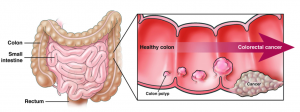The Role of Calprotectin Combined with Fecal Occult Blood in the Diagnosis of Major Intestinal Diseases
Abstract
Early diagnosis of intestinal diseases is crucial to improve patient prognosis. Calprotectin and fecal occult blood (FOB) are two commonly used non-invasive biomarkers that reflect intestinal inflammation and bleeding, respectively. In recent years, the combined detection of calprotectin and fecal occult blood has shown high clinical value in the diagnosis of inflammatory bowel disease (IBD), colorectal cancer (CRC) and other major intestinal diseases. This article reviews the biological characteristics, detection methods and advantages of their combined application in the diagnosis of intestinal diseases, in order to provide a reference for clinical practice.
1. Introduction
Intestinal diseases such as inflammatory bowel disease (IBD, including Crohn’s disease and ulcerative colitis), colorectal cancer (CRC), irritable bowel syndrome (IBS), etc. have similar clinical manifestations, but the treatment options vary significantly. Therefore, early and accurate diagnosis is crucial. Traditional diagnostic methods such as colonoscopy are accurate but invasive and costly, while calprotectin and fecal occult blood tests are increasingly used in clinical practice as non-invasive screening tools. Combined testing can improve diagnostic sensitivity and specificity and reduce unnecessary invasive examinations.
2. Biological characterization and detection of Calprotectin and Fecal occult blood
2.1 Calprotectin
Calprotectin is a calcium-binding protein released by neutrophils and macrophages that is significantly elevated during inflammation. Its characteristics include:
- High stability: it is stable in fecal samples for several days, making it easy to detect.
- High specificity: mainly reflects the level of intestinal inflammation and helps to distinguish IBD from IBS.
Detection method: at present, enzyme-linked immunosorbent assay (ELISA) or immunochromatographic method (POCT) is mainly used.
2.2 Fecal Occult Blood (FOB)
Fecal occult blood test is used to screen for gastrointestinal bleeding, which is common in patients with CRC, polyps or IBD. The main testing methods include:
- Chemical method (gFOBT): Based on the peroxidase activity of hemoglobin but susceptible to dietary interference.
- Immunochemical method (FIT): Specifically detects human hemoglobin, reducing false positives.
3. Clinical Applications of Combined Detection in Major Intestinal Diseases
3.1 Inflammatory Bowel Disease (IBD) vs. Irritable Bowel Syndrome (IBS)
- Calprotectin: significantly elevated in patients with IBD (>50-100 μg/g), whereas usually normal in patients with IBS (<50 μg/g).
Fecal occult blood: may be positive in patients with IBD, but specificity is low.
Combined advantage: calreticulin improves IBD screening sensitivity and fecal occult blood aids in determining disease activit
3.2 Colorectal Cancer (CRC) Screening
- Fecal occult blood (FIT): is the mainstay of CRC screening, but may miss early or non-bleeding tumors.
- Calprotectin: may be elevated in CRC patients due to inflammation in the tumor microenvironment, but is less specific than FIT.
Combined advantage: improves CRC detection, especially valuable for early-stage lesions and right hemicolon cancer
3.3 Other Intestinal Disorders
- Infectious enteritis: Elevated calprotectin, possible FOB positivity, but requires pathogen testing.
- Diverticulitis: Calprotectin aids in assessing inflammation severity, while FOB indicates bleeding risk.
4. Clinical Advantages and Limitations of Combined Testing
4.1 Advantages
- Improve diagnostic accuracy: Calprotectin reflects inflammation, FOB reflects bleeding, and the combination reduces missed diagnoses.
- Reduce unnecessary colonoscopy: low calprotectin + negative FOB can avoid excessive examination.
- Cost-effective: suitable for mass screening, reducing medical costs.
4.2 Limitations
- False positives/negatives: Calprotectin may be influenced by infections, while FOB can be affected by upper GI bleeding.
- Requires clinical correlation: Cannot fully replace endoscopy or imaging.
5. Conclusion and Future Perspectives
Calprotectin combined with fecal occult blood testing is valuable in the diagnosis of major intestinal diseases (e.g., IBD, CRC), which can improve the efficiency of early screening and optimize clinical decision-making. Future studies should further optimize the combined detection strategy and combine it with artificial intelligence or multi-omics analysis to improve the precise diagnosis of intestinal diseases.
We Baysen Medical is always focus on diagnostic technique to improve the quality of life . We have developed 5 technology platforms- Latex , colloidal gold , Fluorescence Immunochromatographic Assay , Molecular,Chemiluminescence Immunoassay, Our Calprotectin +FOB Rapid test and POCT Calportectin and Fecal occult blood test easy operation and can get test result in 15 mins
References
(Relevant studies may be cited here, e.g.:)
- Menees SB, et al. (2013). Meta-analysis of the utility of fecal calprotectin in IBD diagnosis. Am J Gastroenterol.
- Imperiale TF, et al. (2014). Multitarget stool DNA testing for colorectal-cancer screening. N Engl J Med.
- van Rheenen PF, et al. (2020). Fecal calprotectin for screening of IBD in children: a meta-analysis. Pediatrics.
Post time: Jun-25-2025
